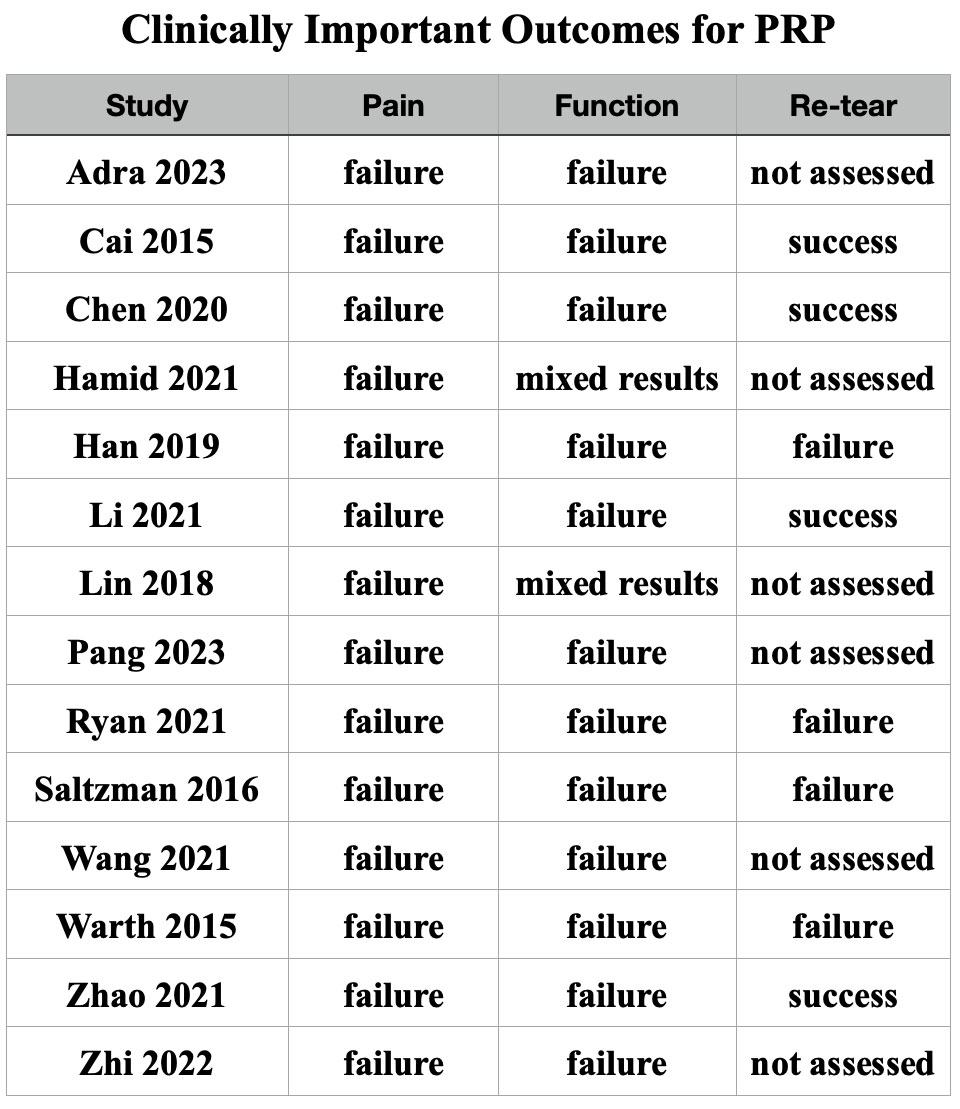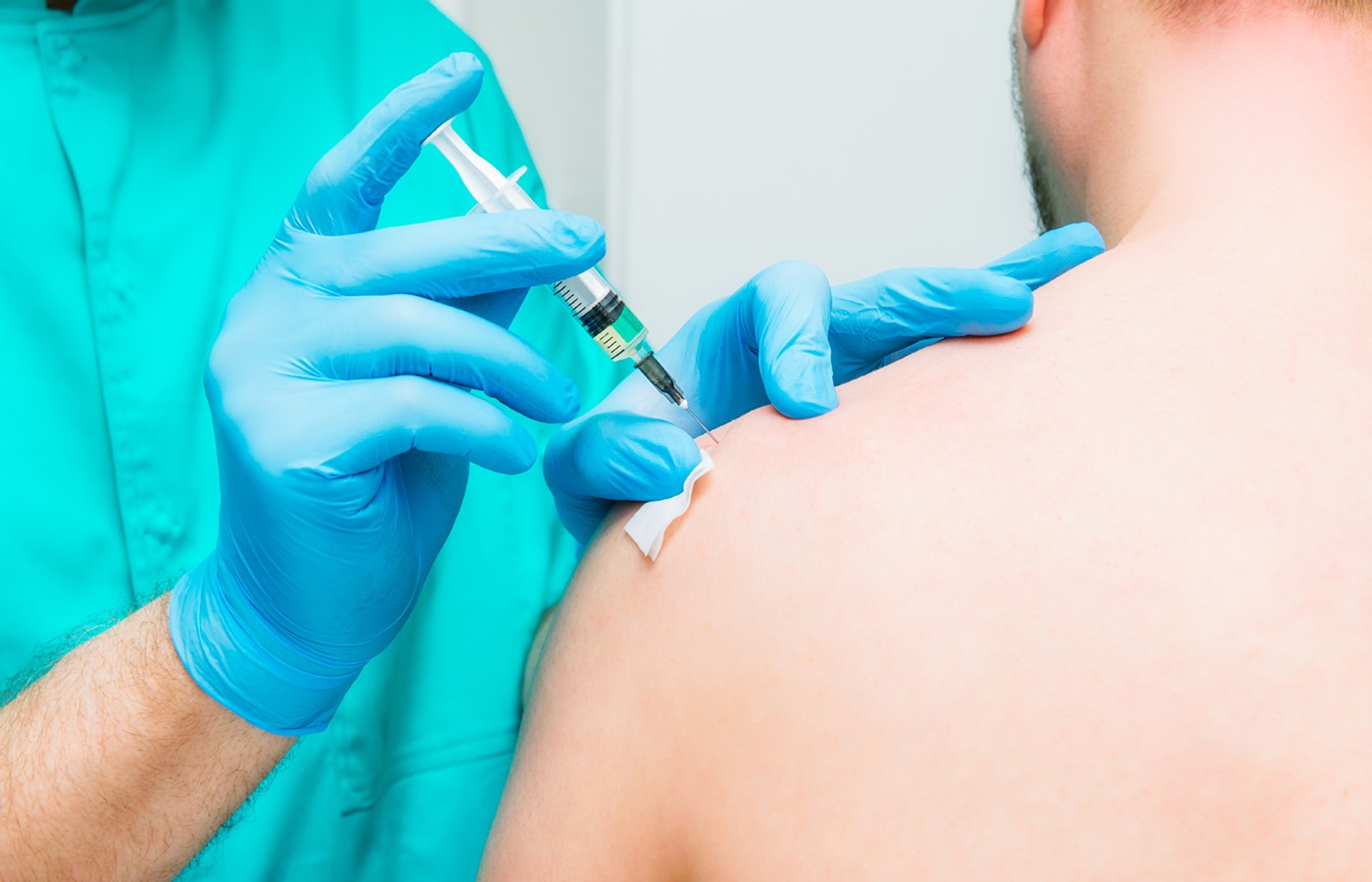It is estimated that 61% of patients with CTS avoid taking surgical options due to postoperative complications and costly surgical procedures. Chiropractic care offers a comprehensive and effective treatment for carpal tunnel syndrome, addressing the condition from multiple angles. Recent studies also have unveiled a game-changing adjunct to chiropractic treatments for CTS: nerve flossing.
Platelet-Rich Plasma Injections for Shoulder Conditions?
As the scientific officer for numerous chiropractic clinics, I am asked to consult on some very interesting cases. A recent patient of one of my clients was a former Major League Baseball pitcher for over a decade. After a thorough case history and examination, our working diagnosis was subacromial impingement syndrome. The patient wanted our opinion on platelet-rich plasma (PRP) injections for his condition.
Unfortunately, baseball injuries are common, especially for pitchers. Subacromial impingement syndrome causes pain and impaired movement of the shoulder joint, which seriously affects patients’ activities of daily living. Studies have found that the incidence of rotator-cuff injuries in the general population over 50 years of age is about 25%.
Surgical approaches for subacromial impingement syndrome have demonstrated a low rate of success, so it is vital to investigate nonsurgical treatments such as PRP. Over the past 10 years, PRP has been increasingly used in sports medicine and orthopaedics, yet its efficacy for shoulder conditions is not established.
Injections of PRP are believed to help with tendon repair by providing a high concentration of growth factors to the area of deterioration. Theoretically, this can enhance recovery and improve tendon healing by increasing the vascularization of the surrounding tissues.
In general, the highest-quality research comes from systematic reviews with meta-analysis. Thus, we searched the PubMed database for meta-analytic reviews in patients with a variety of shoulder pathologies, with a randomization to PRP or control. Data extraction focused on pain, function, and re-tear rates.
Two important protocols must be followed when health care research is being assessed. First, always read the full paper, because abstracts are famous for misleading readers about the actual findings of a study. Jellison, et al., evaluated misinformation among 116 journal articles that reported findings from randomized, controlled trials and were published in “well-regarded” journals.5 Surprisingly, 56% of the article abstracts were judged to contain misleading information, including inappropriate conclusions regarding nonsignificant results. Another team of researchers found that 31% of the abstracts were discordant with the findings of the full papers.14
Second, look for clinically important outcomes. Before you apply a therapy to your patients, make sure the results of the study are clinically important. An effect > 10% absolute change is generally considered to demonstrate a minimally clinically important change.
What the Research Suggests
For this assessment, which examined clinically important outcomes for PRP, 14 meta-analyses met the inclusion criteria.1-4,6-7,9,11-13,16-19 These meta-analyses encompassed 161 overlapping RTCs with 9,810 overlapping patients, and demonstrated that PRP failed to improve pain scores compared with controls.
Twelve of the 14 meta-analyses found that PRP failed to improve function scores compared with controls, and two found mixed results (a benefit was noted with one outcome measure, but not another).
Eight meta-analyses analyzed the re-tear rate. Of those, four found benefit favoring PRP over controls, and four found no difference between PRP and controls. Overall, PRP failed to improve pain or function in patients’ shoulder conditions and showed mixed results in re-tear rates.
We shared our findings with our patient, and he chose to not go forward with PRP. He decided instead to follow a conservative approach: therapeutic rehabilitation, acupuncture, manual therapy, and low-level laser therapy.8,10,15

Weighing New Treatment Modalities: Practical Tips
What should a busy practitioner do when weighing the benefits and harms of a new treatment modality?
- Ask the vendors. Can you trust their claims? They might cite some research, but is it valid? Don’t be fooled into thinking that promoters with degrees (DC, PhD, MD) are providing credible information, because they have financial conflicts of interest.
- Learn how to critically assess the scientific literature, and conduct your own search on the topic of concern. There are many great books and classes that will help you learn.
- Consult with a trusted independent researcher who has no conflict of interest, and ask for a formal response to your clinical question. A good source would be a professor from a chiropractic college who teaches research methods and has no conflict of interest.
If we put our patients first, we will choose either #2 or #3.
References
- Adra M, El Ghazal N, Nakanishi H, et al. Platelet-rich plasma versus corticosteroid injections in the management of patients with rotator cuff disease: a systematic review and meta-analysis. J Orthop Res, 2023;41:7-20.
- Cai YZ, Zhang C, Lin XJ. Efficacy of platelet-rich plasma in arthroscopic repair of full-thickness rotator cuff tears: a meta-analysis. J Shoulder Elbow Surg, 2015;24:1852-9.
- Chen X, Jones IA, Togashi R, et al. Use of platelet-rich plasma for the improvement of pain and function in rotator cuff tears: a systematic review and meta-analysis with bias assessment. Am J Sports Med, 2020;48:2028-2041.
- Hamid MS, Sazlina SG. Platelet-rich plasma for rotator cuff tendinopathy: a systematic review and meta-analysis. PLoS One, 2021;16:e0251111.
- Jellison S, Roberts W, Bowers A, et al. Evaluation of spin in abstracts of papers in psychiatry and psychology journals. BMJ Evid Based Med, 2019:178-181.
- Li Y, Li T, Li J, et al. Platelet-rich plasma has better results for retear rate, pain, and outcome than platelet-rich fibrin after rotator cuff repair: a systematic review and meta-analysis of randomized controlled trials. Arthroscopy, 2022;38:539-550.
- Han Y, Huang H, Pan J, et al. Meta-analysis comparing platelet-rich plasma vs hyaluronic acid injection in patients with knee osteoarthritis. Pain Med, 2019;20:1418-1429.
- Hawk C, Minkalis AL, Khorsan R, et al. Systematic review of nondrug, nonsurgical treatment of shoulder conditions. J Manipulative Physiol Ther, 2017;40:293-319.
- Lin MT, Chiang CF, Wu CH, et al. Comparative effectiveness of injection therapies in rotator cuff tendinopathy: a systematic review, pairwise and network meta-analysis of randomized controlled trials. Arch Phys Med Rehabil, 2019;100:336-349.e15.
- Molsberger AF, Schneider T, Gotthardt H, Drabik A. German Randomized Acupuncture Trial for chronic shoulder pain (GRASP) - a pragmatic, controlled, patient-blinded, multi-centre trial in an outpatient care environment. Pain, 2010;151:146-154.
- Pang L, Xu Y, Li T, et al. Platelet-rich plasma injection can be a viable alternative to corticosteroid injection for conservative treatment of rotator cuff disease: a meta-analysis of randomized controlled trials. Arthroscopy, 2023;39:402-421.e1.
- Ryan J, Imbergamo C, Sudah S, et al. Platelet rich product supplementation in rotator cuff repair reduces retear rates and improves clinical outcomes: a meta-analysis of randomized controlled trials. Arthroscopy, 2021;37:2608-2624.
- Saltzman BM, Jain A, Campbell KA, et al. Does the use of platelet-rich plasma at the time of surgery improve clinical outcomes in arthroscopic rotator cuff repair when compared with control cohorts? A systematic review of meta-analyses. Arthroscopy, 2016;32:906-18.
- Saric L, Vucic K, Dragicevic K, et al. Comparison of conference abstracts and full-text publications of randomized controlled trials presented at four consecutive World Congresses of Pain: Reporting quality and agreement of results. Eur J Pain, 2019;23:107-116.
- Steuri R, Sattelmayer M, Elsig S, et al. Effectiveness of conservative interventions including exercise, manual therapy and medical management in adults with shoulder impingement: a systematic review and meta-analysis of RCTs. Br J Sports Med, 2017;51:1340-1347.
- Wang C, Zhang Z, Ma Y, et al. Platelet-rich plasma injection vs corticosteroid injection for conservative treatment of rotator cuff lesions: a systematic review and meta-analysis. Medicine, 2021;100:e24680.
- Warth RJ, Dornan GJ, James EW, et al. Clinical and structural outcomes after arthroscopic repair of full-thickness rotator cuff tears with and without platelet-rich product supplementation: a meta-analysis and meta-regression. Arthroscopy, 2015;31:306-20.
- Zhao D, Han YH, Pan JK, et al. The clinical efficacy of leukocyte-poor platelet-rich plasma in arthroscopic rotator cuff repair: a meta-analysis of randomized controlled trials. J Shoulder Elbow Surg, 2021;30:918-928.
- Zhi F, Cai F, Zhang W, et al. Clinical efficacy of different shoulder joint drug injections for rotator cuff injuries: a network meta-analysis. Medicine, 2022;101:e30659.



